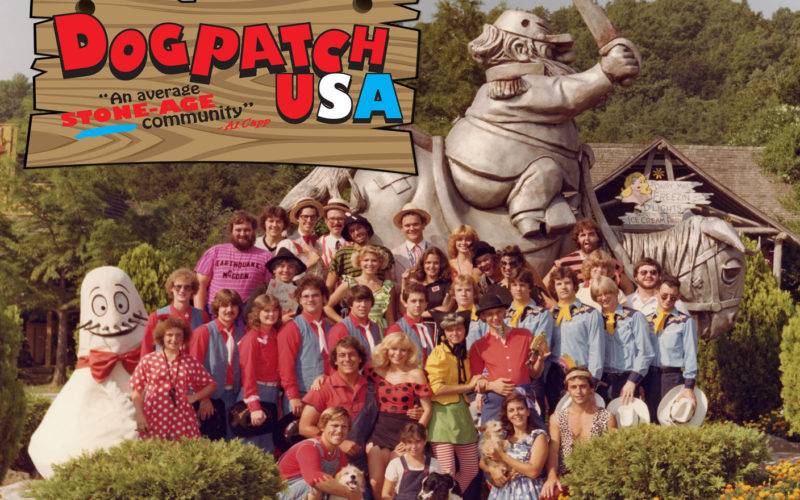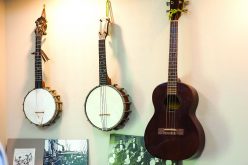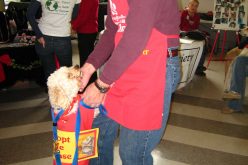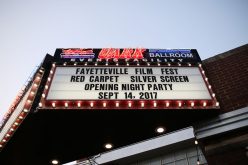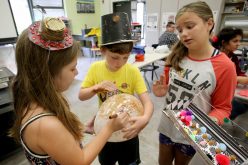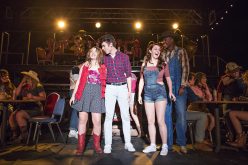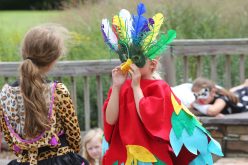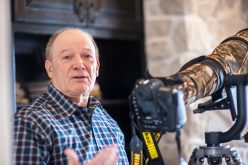Dogpatch lives again in new documentary
BECCA MARTIN-BROWN
bmartin@nwadg.com
The story has to start way back in 1934, when a cartoonist named Al Capp envisioned a place called Dogpatch.
“It’s hard to overstate how big a deal in pop culture ‘Li’l Abner’ was in its day,” Chris Foran wrote in The Milwaukee Journal Sentinel on a “Throwback Thursday” comics day. “The strip began in six newspapers on Aug. 13, 1934. At its peak, [it] was published in more than 900 newspapers in North America, with more than 70 million readers. The strip sparked merchandising juggernauts, TV shows, movies, a Tony-winning Broadway musical and even a theme park.
“‘Li’l Abner’ quickly became a cultural obsession,” Foran went on. “One character — the ‘Shmoo,’ a white blob with a cuddly disposition that could provide all sorts of foodstuffs with ease — was so popular that merchandise in its first year generated more than $25 million in sales (about $245 million in 2016 dollars).”
In addition to Li’l Abner, the characters included his constant suitor, Daisy Mae; Mammy and Pappy Yokum, Abner’s parents; and Sadie Hawkins, “a girl so homely her father staged a footrace in which the unmarried women of Dogpatch pursued the hamlet’s bachelors.”

Courtesy Photo
The Dogpatch USA theme park was based on a cartoon strip started in 1934 by Al Capp and included characters like Moonbeam McSwine, the “bad girl” of the story; Hairless Joe and Lonesome Polecat, the purveyors of “Kickapoo Joy Juice”; and Earthquake McGoon, “the world’s dirtiest wrassler.”
Growing up in California, Danielle Keller had never heard of Al Capp or Dogpatch, although she did have a vague memory of a musical with the Li’l Abner characters. It wasn’t until 2017, when she started working on a documentary film about the theme park, that she realized: “Those Sadie Hawkins dances I grew up going to? They came about because of that comic strip — which, in a way, was ahead of its time, I guess, on that topic. But how weird it was a big part of my high school experience, and I never knew it!”
On the other hand, filmmakers Jeff and Heather Carter both had very clear memories of the theme park, Dogpatch USA, which opened in 1968 between Harrison and Jasper. In fact, Heather says, it was a photo of Jeff visiting the park with his dad that “really launched the whole [documentary] project. After Jeff’s dad passed away he found this picture … the picture triggered some old memories, and he began to do some more research on the history of Dogpatch.
The Carters — with Keller as a producer — have spent the last year gathering memories like these for “Dogpatch USA: An Average Stone-Age Community,” which debuts May 18 — the 50th anniversary of the park’s opening day — in a red carpet screening at North Arkansas College in Harrison. It is the first feature-length documentary for the couple, who agree that coming up with never-before-seen images and finding pivotal people to interview has taken a lot of detective work, even more determination and generous help from the community.
Jim Sprott was hired as part of the Dogpatch entertainment troupe in the summer of 1969. He became an attorney, not an actor, but Dogpatch definitely changed his life.
“The first person I saw when we met at Dogpatch sometime in April of 1969 was this beautiful blonde in a blue and yellow outfit,” he recalls. “I worked hard, and she became my wife.” Their second summer at the park, Jan — then Jan Greene — also became the full-time Daisy Mae. She remembers sunburns — “there was no such thing as sunscreen then” — and fireworks at closing time and “cars parked all up on the hill and down the hill and on Highway 7, and sometimes they’d have to turn people away at the gate.”

Courtesy Photo
Filmmaker Jeff Carter found this picture taken with his dad at Dogpatch USA and was inspired to chronicle the glory years of the theme park between Jasper and Harrison. He says the lasting impression of the park “was a little country, a little hillbilly and a whole lot unforgettable.”
“We were working 12 hour shifts, six days a week,” Jim Sprott adds, “and it never felt like work. We would go to parties and dances after work, for goodness sake. It was a magical summer for me.”
Along the way, they’ve also been assisted by Al Capp’s children, including son Colin, who lives in Little Rock, and Rick Chudomelka, the park’s first entertainment director. They’ve visited the abandoned park as it exists today but stayed with their decision to end the film in 1993, when the park closed. And they’ve waded through so many submitted photos that the Boone County Heritage Museum in Harrison will get an entire collection of digital images to go with a new exhibit on the park planned to open after the movie premiere.
“Because we are located where we are, we would like to be the go-to place for Dogpatch memorabilia and artifacts, but the baby boomer generation hasn’t been ready to turn loose of that stuff yet,” says museum director Toinette Madison. “I think the film has motivated people to dig through their closets and think about where the best place might be for their treasures.”
People like Keller might have started the process of making the film wondering why Dogpatch has stayed firmly anchored in so many memories. She says the visit to the abandoned park “really made it come to life for me. I was able to see, ‘Oh, this is where the tram ran’ and ‘This is where Mammy and Pappy lived.’ Seeing it all overgrown didn’t ruin it for me. It made it feel very real — and it made me want people to see what Dogpatch was in its time.”
Madison says being sixth generation Newton County, “I’ve always said if you didn’t work at Dogpatch, you went there. It touched so many people. I don’t think anything can ever re-create that magic, but this film is as close as we can get.”
Heather Carter agrees.
“The way the park is sitting in the valley allowed for visitors to ‘travel in’ by tram and feel transported into the fantasy land that was Dogpatch USA, where you could actually interact and talk with the characters. The setting and the Al Capp characters made you feel like you were really visiting the town of Dogpatch — and they treated you like family.”
__
FAQ
Gala Premiere:
‘Dogpatch USA: An Average Stone-Age Community’
WHEN — 6 p.m. May 18
WHERE — Durand Center at North Arkansas College in Harrison
COST — $30
INFO — dogpatchfilm.com or email heather@cartersav.com
BONUS — The event will include live music by some former Dogpatch musicians and a filmmakers Q&A following the film.
AND
Public Matinee
WHEN — 2 p.m. May 19
WHERE — Lyric Theatre in Harrison
COST — $10
INFO — dogpatchfilm.com
__
FYI
Fast Facts
• Al Capp spoke at the groundbreaking for the Dogpatch USA theme park on Oct. 3, 1967.
• The cost of the original construction was $1.3 million.
• In its first year, 1968, the park had 300,000 visitors.
• Admission was $1.50 for adults, half-price for children.
• Al Capp’s son Colin worked at the park that year.
• The park closed in 1993.
— Source: Arkansas Encyclopedia

